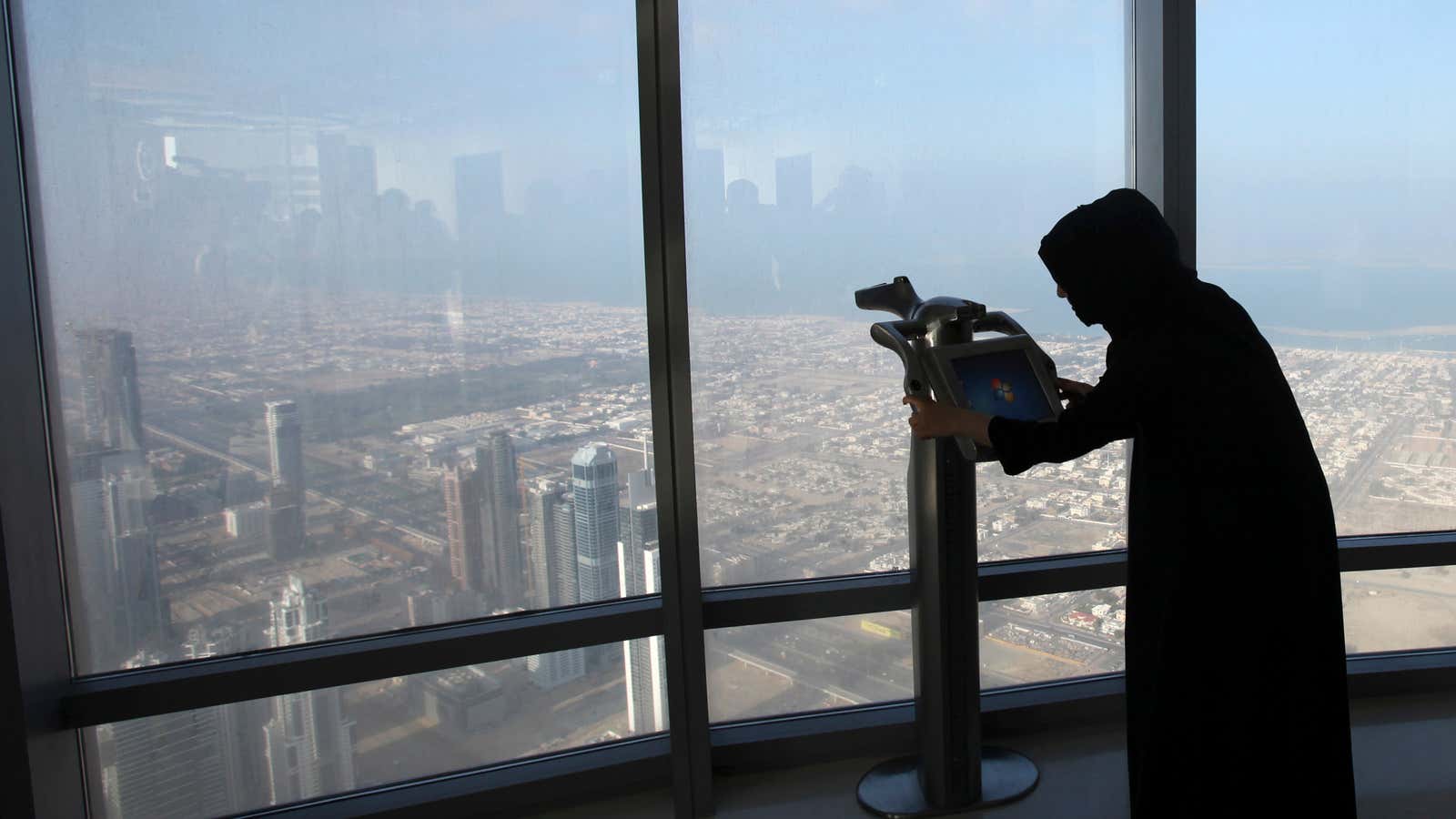Dubai’s property market is on a tear—again. Residential rents are rising fast, investors are lining up to finance new projects, and the outrageous structures ranging from the world’s highest Ferris Wheel to artificial islands are making a comeback. The commercial real estate market is also booming, with available office space expected to increase 19% by the end of 2015. But the construction frenzy continues despite the fact that 31% of the emirate’s office space remains vacant, second only to neighboring Abu Dhabi’s 38%, according to Jones Lang Lasalle (pdf).

Local builders and developers are confident that the new mega structures will attract tenants. Ahmed Bin Sulayem, the chairman of the Dubai Multi Commodities Centre, which is building what could be the world’s tallest commercial tower, says many existing office buildings don’t offer the size, location and facilities that multinational companies need. He is hoping to attract the 200 new companies entering the state-owned business zone each month, more than 90% of which are new entrants to Dubai. “The crisis has shown us that well-designed and thought out developments will always hold value and demand,” Bin Sulayem told Bloomberg.
But an oversupply of office space has already forced many developers to convert buildings designed for commercial use to residential complexes, according to property consultancy CBRE. The unique structure of Dubai’s property market has contributed to the high vacancy rates. Most of the the office space is sold floor-by-floor under a system known as strata titles, which makes it difficult for tenants looking for larger, contiguous office spaces. As corporate executives try to minimize costs in a down economy, few have been willing to pay the higher prices that taller buildings geared toward bigger tenants command.
